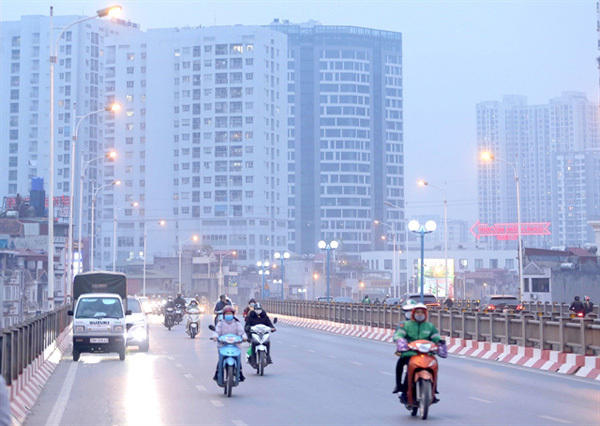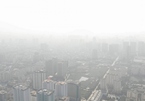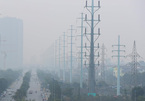 |
| A street in Hanoi. The capital city recorded a PM2.5 level at 29 µg/m³, much higher than the WHO's guideline of 5 μg/m³. — VNA/VNS Photo |
In 2020, the areas with high PM2.5 concentration were mainly in the Red River Delta, the north central region and the southeast region, according to the findings from a report on the state of PM2.5 in Vietnam during the 2019-20 period.
The report is based on multisource data and is conducted by the University of Engineering and Technology under the Vietnam National University in Hanoi ̣(VNU-UET) and Live & Learn for Environment and Community.
“The improved air pollution nationwide in 2020 was due in part to the social distancing due to the COVID-19 pandemic,” said Associate Professor and Doctor Nguyen Thi Nhat Thanh, from VNU-UET, an author of the report.
Data in 2018 showed that major sources of PM2.5 pollution in Vietnam came from burning agricultural by-products (40 per cent), cooking (17 per cent), transport (13 per cent), forest fires (12.7 per cent) and industrial activities (11 per cent), and thermal power (3.3 per cent).
In Hanoi, 48.3 per cent of the PM2.5 pollution was caused by industrial and craft village activities, 21.3 per cent from transport and 20.2 from burning agricultural by-products.
In HCM City, 58.2 per cent of the pollution came from transport, 22.8 per cent from industrial activities and 12.8 per cent from cooking.
In 2020, Vietnam had 10 out of 63 provinces and cities with higher PM2.5 concentration levels than the national mandated threshold. These 10 localities are all in the north including Hanoi with PM2.5 level at 29 µg/m³ and Bac Ninh Province at 33 µg/m³, much higher than the national allowed threshold of 25 μg/m³ and WHO's guideline of 5 μg/m³.
In 2019, the number was 13 localities, of which 11 were in the north and the rest were in the south.
Data crucial for air quality control
In the past few years, the state of PM2.5 in Vietnam has been studied and published in reports and scientific journals by researchers from government agencies, universities, institutes, and social organisations.
However, the data used in these reports are often limited in terms of timespan or geographical coverage and have not utilised open-source data, including data from satellites, and citizen science monitoring networks.
“Our report provides comprehensive information on the spatial and temporal distributions of air pollution due to PM2.5 in Vietnam. The findings from the report will be a supplemental source of data, helping provinces and cities to develop air quality management plans,” said Thanh.
Hoang Duong Tung from Vietnam Clean Air Partnership said: “It is crucial to promote research to identify the sources of PM2.5 pollution and other air pollutants, especially in provinces and cities heavily polluted by PM2.5.”
“The findings from these reports will help authorities to determine priority plans to manage the air quality,” he said.
The workshop “State of PM2.5 in Vietnam during 2019-2020 based on multisource data and application of satellite technology in air pollution monitoring and research” was held by Live & Learn for Environment and Community (Live&Learn/USAID), University of Engineering and Technology under the Vietnam National University in Hanoi, Vietnam Clean Air Partnership and Tia Sáng Magazine.
Vietnam is ranked 115th in air quality that measured household solid fuel use and PM2.5 average exposure in the biennial Environmental Performance Index compiled by scientists at American universities Yale and Columbia.
According to the World Health Organization, air pollution is one of the greatest environmental risks to health. By reducing air pollution levels, countries can reduce the burden of disease from stroke, heart disease, lung cancer, and both chronic and acute respiratory diseases, including asthma.
The organisation estimated that in Vietnam, around 60,000 deaths each year are air pollution-related.
Source: Vietnam News

Air quality in northern Vietnam reaches unhealthy levels
Despite the air quality in many central and southern localities showing signs of improvement, several northern provinces saw elevated levels of air pollution on September 3, that could seriously impact human health.

Hanoi authorities advised to work with nearby provinces to control air quality
Hanoi needs to issue more policies and work with nearby provinces to improve its air quality, according to a World Bank official.